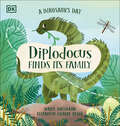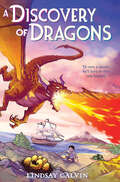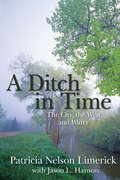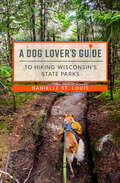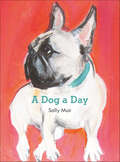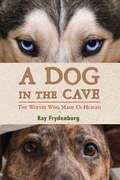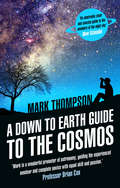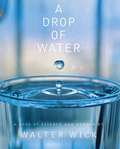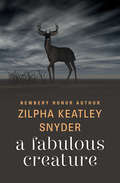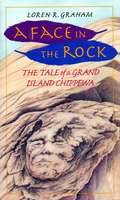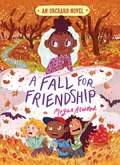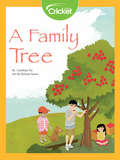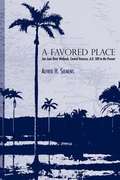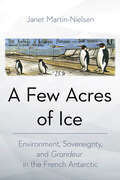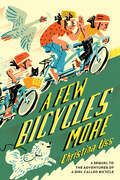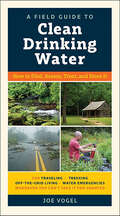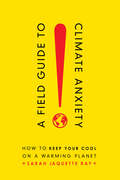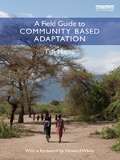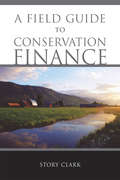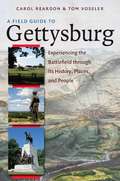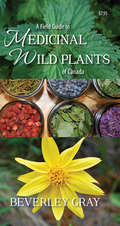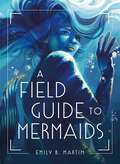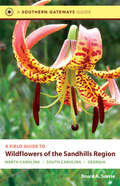- Table View
- List View
A Dinosaur's Day: Diplodocus Finds Its Family
by Elizabeth Gilbert BediaEmbark on a prehistoric journey with this board book of fun stories and incredible facts about dinosaurs.Introducing A Dinosaur&’s Day: Diplodocus Finds Its Family - a story time adventure that teaches kids exciting facts about dinosaurs. Go on an adventure with a baby diplodocus as it dodges predators, seeks out yummy plants to eat, and follows its family.Packed with beautiful pictures and compelling facts, this dinosaur book can help children aged 3-5 to learn about the diplodocus species through images, pronunciation guides, and amazing facts and figures. Little dinosaur lovers can join Diplodocus on a quest to find its family in the mighty Jurassic world.A Dinosaur&’s Day: Diplodocus Finds Its Family…- Helps children learn about dinosaurs in this beautiful picture book format- Teaches readers dinosaur facts and behavior in a very natural way- Includes a non-fiction section about the dinosaur species following the story - Features bright, colorful pages with an engaging narrative- Has clear and fun text to help children learn and engage easilyTeach children about different prehistoric species in this educational dinosaur book through a fun and engaging story and vibrant images. This fantastic dinosaur interactive book is perfect for pre-reading toddlers, and children just learning to read. Little ones can enjoy the spectacular scenery in the Jurassic world along the way, as Diplodocus camouflages, explores, and munches on plants.
A Discovery of Dragons
by Lindsay GalvinHow to Train Your Dragon meets natural history, with real science, in this story of discovery through one of the lens of one of the most historical voyages in history.It's 1835. Cabin boy Simon Covington is on the voyage of a lifetime to the Galapagos Islands with the world-famous scientist, Charles Darwin.But when Simon falls overboard during a huge storm, he washes up on an unexplored island. Stranded there, he makes a discovery that could change the world. Now it's not just his own survival at stake - the future of an undiscovered species is in his hands. But perhaps, there's one person who could help...Based on the real events of Charles Darwin's legendary voyage, this is a novel that melds science with wonder.
A Ditch in Time
by Patricia Nelson Limerick Jason HansonThe history of water development . . . offers a particularly fine post for observing the astonishing and implausible workings of historical change and, in response, for cultivating an appropriate level of humility and modesty in our anticipations of our own unknowable future. Tracing the origins and growth of the Denver Water Department, this study of water and its unique role and history in the West, as well as in the nation, raises questions about the complex relationship among cities, suburbs, and rural areas, allowing us to consider this precious resource and its past, present, and future with both optimism and realism. Patricia Nelson Limerick is the faculty director and board chair of the Center of the American West at the University of Colorado, where she is also a professor of history and environmental studies. She currently serves as the vice president for the teaching division of the American Historical Association. Her most widely read book, The Legacy of Conquest, is in its twenty-fifth year of publication.
A Dog Lover's Guide to Hiking Wisconsin's State Parks
by Danielle St. LouisDanielle St. Louis and her energetic Labrador-border collie rescue dog, Lucky, have hiked every Wisconsin state park together. While doing so, they enjoyed the state’s rich natural beauty and the challenges that can come from hiking with a canine companion. St. Louis documents it all in this fun and thorough guide. A Dog Lover’s Guide to Hiking Wisconsin’s State Parks divides Wisconsin into five regions and further details specific trails, graded for dog reactivity as well as the fitness level of human and canine alike. St. Louis also helpfully notes the availability of nearby facilities such as bathrooms, water stations, trashcans, designated dog swimming areas, and veterinarians. Truly one of a kind, this book is a must have for any Wisconsin dog lover looking to go out into nature with their pup.
A Dog Lover's Guide to Hiking Wisconsin's State Parks
by Danielle St. LouisDanielle St. Louis and her energetic Labrador-border collie rescue dog, Lucky, have hiked every Wisconsin state park together. While doing so, they enjoyed the state’s rich natural beauty and the challenges that can come from hiking with a canine companion. St. Louis documents it all in this fun and thorough guide. A Dog Lover’s Guide to Hiking Wisconsin’s State Parks divides Wisconsin into five regions and further details specific trails, graded for dog reactivity as well as the fitness level of human and canine alike. St. Louis also helpfully notes the availability of nearby facilities such as bathrooms, water stations, trashcans, designated dog swimming areas, and veterinarians. Truly one of a kind, this book is a must have for any Wisconsin dog lover looking to go out into nature with their pup.
A Dog a Day
by Sally MuirA lovingly curated collection of 365 charming portraits of our favorite four-legged companions, with anecdotes celebrating dogs’ endearing and irresistible quirks, based on Sally Muir’s popular “Dog a Day” Facebook page.Sally Muir’s debuted her “Dog a Day” project on Facebook in 2013: “My name is Sally Muir and this is a new gallery where I will add a dog drawing/painting every day, adding up to a massive 365-day dogfest.” As her Facebook page took off, so did the number of Sally’s portraits and her fame. Drawing on the substantial collection of artwork on her site, A Dog a Day is an irresistible collection of 365 beautiful portraits of dogs of all shapes and sizes, depicted in a range of mediums—from loosely worked sketches, prints, and charcoal drawings to oil paintings and lithographs. The artwork is accompanied by short anecdotes throughout, that reflects on these beloved animals’ goofy, loyal, and spunky dispositions. Charming and whimsical, A Dog a Day is a must for all dog lovers, a loving collection that guarantees a year’s worth of tail-wagging sweetness.
A Dog in the Cave: The Wolves Who Made Us Human
by Kay FrydenborgWe know dogs are our best animal friends, but have you ever thought about what that might mean? Fossils show we’ve shared our work and homes with dogs for tens of thousands of years. Now there’s growing evidence that we influenced dogs’ evolution—and they, in turn, changed ours. Even more than our closest relatives, the apes, dogs are the species with whom we communicate best. Combining history, paleontology, biology, and cutting-edge medical science, Kay Frydenborg paints a picture of how two different species became deeply entwined—and how we coevolved into the species we are today.
A Down to Earth Guide to the Cosmos
by Mark ThompsonTo the beginner, the star-filled night sky can seem mysterious and unfathomable. But with this book as a guide the awesome nature of the Cosmos is brought down to Earth. Over the course of twelve chapters Mark Thompson, one of the presenters on BBC One’s Stargazing Live and the resident astronomer on ITV’s The Alan Titchmarsh Show, will take you on a journey through space, tackling the key concepts of astronomy and unlocking the secrets of the sky. From the origins of our Universe to the ever evolving techniques used to explore deep space, A Down to Earth Guide to the Cosmos traces the journey of galactic discovery that has obsessed mankind for thousands of years.Accompanying the narrative, a series of monthly sky guides focus on the astronomical highlights visible at each given time of year, with handy charts to show you exactly what to look for and how to navigate around the sky at night. As fascinating as it is accessible, A Down to Earth Guide to the Cosmos is a must for anyone who gazes up and wishes they knew more about the final frontier...
A Drop of Water
by Walter Wick<p>The most spectacular photographs ever created on the subject of water appear in this unique science book by Walter Wick. The camera stops the action and magnifies it so that all the amazing states of water can be observed - water as ice, rainbow, stream, frost, dew. Readers can examine a drop of water as it falls from a faucet, see a drop of water as it splashes on a hard surface, count the points of an actual snowflake, and contemplate how drops of water form clouds. <p>[This text is listed as an example that meets Common Core Standards in English language arts in grades 2-3 at http://www.corestandards.org.]
A Fabulous Creature
by Zilpha Keatley SnyderFifteen-year-old James has just discovered the magnificence of nature—but can he protect it from the phoniness of the material world?When his academic-minded parents decide to forsake civilization for a wilderness summer in the Sierra Nevada mountains, James Fielding figures he&’ll be counting the minutes until it&’s over. But in the woods one day, he comes upon a magnificent deer and becomes fascinated by its majesty and beauty. Then he meets two very different girls. Thirteen-year-old Griffin Donahue is &“pure and free and beautiful.&” Diane Jarrett is a tanned, &“hot-pink-bikinied&” goddess. Griffin is at one with nature. Diane is slumming at the nearby exclusive camp, with its decadent luxury and A-list guests. When these two worlds collide, threatening the existence of the stag, James embarks on a quest to find a friend who&’s gone missing—and to save a life.This ebook features an extended biography of Zilpha Keatley Snyder.
A Face in the Rock: The Tale Of A Grand Island Chippewa
by Loren R. Graham Abigail RorerEight miles long and four miles wide, Grand Island lies off the south shore of Lake Superior. It was once home to a sizable community of Chippewa Indians who lived in harmony with the land and with each other. Their tragic demise began early in the nineteenth century when their fellow tribesmen from the mainland goaded them into waging war against rival Sioux. The war party was decimated; only one young brave, Powers of the Air, lived to tell the story that celebrated the heroism of his band and formed the basis of the legend that survives today. Distinguished historian Loren R. Graham has spent more than forty years researching and reconstructing the poignant tale of Powers of the Air and his people. A Face in the Rock is an artful melding of human history and natural history; it is a fascinating narrative of the intimate relation between place and people. Powers of the Air lived to witness the desecration of Grand Island by the fur and logging industries, the Christianization of the tribe, and the near total loss of the Chippewa language, history, and culture. Graham charts the plight of the Chippewa as white culture steadily encroaches, forcing the native people off the island and dispersing their community on the mainland. The story ends with happier events of the past two decades, including the protection of Grand Island within the National Forest system, and the resurgence of Chippewa culture.
A Fall for Friendship (An Orchard Novel #3)
by Natalie Andrewson Megan AtwoodOlive doesn’t believe in ghosts, but something weird is definitely going on at the orchard and she wants to get to the bottom of it in this third novel of a sweet series about the bonds of friendship.Olive, Peter, Sarah, and Lizzie are getting ready for Halloween. This year, they’re planning a zombie hayride and a haunted barn party. As they set up, Lizzie’s older sister, Gloria tells them that a ghost haunts the very barn they’re decorating. According to Gloria, the ghost is angry and desperate for revenge. Lizzie, Sarah, and Peter are fascinated, but Olive doesn’t believe any of it. Not even when strange, ghostly things keep happening all around them. Olive sets out to prove that ghosts don’t exist and that Gloria and her friends are behind it all. But the more Olive investigates, the scarier things become. Could Gloria be telling the truth? Is the orchard really haunted?
A Family Tree
by Caroline YuHannah's grandmother has a tree growing in the front yard that produces a delicious, sweet fruit. The tree is very special to Hannah's family.
A Favored Place: San Juan River Wetlands, Central Veracruz, A.D. 500 to the Present
by Alfred H. SiemensI doubt there is a wetland environment anywhere in the Americas inhabited, used, and modified as long as San Juan Basin, and by as many cultures with different technologies. This story needs to be told. --William E. Doolittle, Professor of Geography, University of Texas at Austin The wetlands of the San Juan Basin in Central Veracruz, Mexico, have been a favored place since the fifth century A. D. , when Prehispanic people built an extensive network of canals and raised fields that allowed for almost year-round agriculture. Alfred Siemens' discovery of the remains of this network in the 1970s led him to uncover fifteen centuries of land-use history in the region. This book contains a full record of his findings. Siemens organizes his history of the San Juan Basin around the question: What relationships exist between Prehispanic agriculture and the production systems of the tropical lowlands in our own time? This focus allows him to chart the changes in human perceptions and uses of the landscape, from the Prehispanic wetland agricultural system to the drained pastures of today's cattle ranches. Amplified with air oblique photography, maps, and tables, and enriched with data from archaeology and colonial archives, this is an authoritative historical geography of a wetland landscape. Or, in the author's more modest words, It seems to me that what I have here is a biography of a swamp.
A Few Acres of Ice: Environment, Sovereignty, and "Grandeur" in the French Antarctic
by Janet Martin-NielsenA Few Acres of Ice is an in-depth study of France's complex relationship with the Antarctic, from the search for Terra Australis by French navigators in the sixteenth century to France's role today as one of seven states laying claim to part of the white continent. Janet Martin-Nielsen focuses on environment, sovereignty, and science to reveal not only the political, commercial, and religious challenges of exploration but also the interaction between environmental concerns in polar regions and the geopolitical realities of the twenty-first century.Martin-Nielsen details how France has worked (and at times not worked) to perform sovereignty in Terre Adélie, from the territory's integration into France's colonial empire to France's integral role in making the environment matter in Antarctic politics. As a result, A Few Acres of Ice sheds light on how Terre Adeìlie has altered human perceptions and been constructed by human agency since (and even before) its discovery.
A Few Bicycles More
by Christina UssIn the sequel to the popular Adventures of a Girl Called Bicycle, our hero reunites with her long-lost family and attempts a daring vehicular rescue.A Few Bicycles More is the exciting sequel to Christina Uss&’s Adventures of a Girl Called Bicycle. Bicycle has been back from her cross-country adventure with her robot-like bike, named Fortune, for just a month when it starts malfunctioning, insisting that they pedal away from their home in Washington D.C. to Harpers Ferry in West Virginia. Once there, they discover a scrapyard where bicycles are being crushed and recycled—and it appears they are too late to save them. Bicycle and Fortune head to a convenience store so Bicycle can drown her sorrows with a chocolate bar. Much to her astonishment, she meets her long-lost family there. Bicycle learns that they have been looking for her since she disappeared as a toddler and that she is a quintuplet. She is happy to go live with them except for one thing: her family doesn&’t share her passion for cycling. In fact, her sisters have never even ridden a bike. Then Fortune acts up again, leading Bicycle back to the scrapyard where she discovers that there are four bicycles left and they were all made by the same inventor who created her Fortune. Four seems too coincidental to ignore--the perfect number to bring her sisters up to speed. She sets a plan in motion to rescue the bikes, a plan that if it works will help her fit into her family and still stay true to cycling self.A Junior Library Guild Gold Standard Selection
A Field Guide to Clean Drinking Water: How to Find, Assess, Treat, and Store It
by Joe VogelHow to find and prepare safe drinking water—anywhere, any time! Clean drinking water may be the last thing we think about day to day—but it’s the first thing we need in an emergency. Now, survival expert and biologist Joe Vogel explains how to find, treat, and store safe drinking water—even in the most extreme conditions. A Field Guide to Clean Drinking Water includes information about: ·The role of water in the body and how to calculate your water requirement ·Plants, geographical features, and more indicators that signal the presence of water ·How to collect dew and precipitation, and extract water from plants ·How to screen “raw water” for bacteria, pesticides, and other contaminants ·Every purifying method from boiling techniques to chemical disinfection ·And storage options that meet every need.Small enough to take anywhere—and broad enough to cover everything—this is a vital manual for backpackers, survivalists, and anyone who may need to know how to create their own drinking water.
A Field Guide to Climate Anxiety: How to Keep Your Cool on a Warming Planet
by Sarah Jaquette RayA youth movement is reenergizing global environmental activism. The "climate generation"—late millennials and iGen, or Generation Z—is demanding that policy makers and government leaders take immediate action to address the dire outcomes predicted by climate science. Those inheriting our planet’s environmental problems expect to encounter challenges, but they may not have the skills to grapple with the feelings of powerlessness and despair that may arise when they confront this seemingly intractable situation. Drawing on a decade of experience leading and teaching in college environmental studies programs, Sarah Jaquette Ray has created an "existential tool kit" for the climate generation. Combining insights from psychology, sociology, social movements, mindfulness, and the environmental humanities, Ray explains why and how we need to let go of eco-guilt, resist burnout, and cultivate resilience while advocating for climate justice. A Field Guide to Climate Anxiety is the essential guidebook for the climate generation—and perhaps the rest of us—as we confront the greatest environmental threat of our time.
A Field Guide to Climate Change: Understanding the Problems
by Adam BriggleThis book is a guide for understanding climate change. It takes an interdisciplinary approach because climate change is simultaneously a matter of science, engineering, economics, politics, culture, ethics, and more. A Field Guide to Climate Change thus follows the contours of climate change as it appears in the world—as a tangle of problems. Briggle presents climate literacy as a form of problem-posing by offering a set of tools for understanding how problems get framed, debated, and resolved. Through developing climate literacy, students gain the ability to think critically about how facts are constructed and mobilized in the pursuit of values. <P><P> Part One (Big Picture and Fundamentals) provides basic definitions and broad orientation by situating climate change within larger contexts like the Anthropocene, international climate diplomacy, sustainable development, and “green growth.” Part Two (Climate Sciences) offers tools for understanding climate science, its historical development, and its place in society by asking: who knows, what do we know, and how do we know it? Part Three (Politics, Ethics, and Policy) shows how to analyze debates about climate change policies from mitigation to rewilding.
A Field Guide to Community Based Adaptation
by Tim MageeThe world's poor will be the most critically affected by a changing climate—and yet their current plight isn't improving rapidly enough to fulfill the UN’s Millennium Development Goals. If experienced development organizations are finding it difficult to solve decades-old development problems, how will they additionally solve new challenges driven by climate change? This book illustrates how including community members in project design and co-management leads to long-lasting, successful achievement of development and adaptation goals. This field guide provides a system of building block activities for staff on the ground to use in developing and implementing successful adaptation to climate change projects that can be co-managed and sustained by communities. Based on years of use in 129 different countries, the techniques illustrated in this field guide use a step-by-step progression to lead readers through problem assessment, project design, implementation, and community take over. The book equips development staff with all the tools and techniques they need to improve current project effectiveness, to introduce community based adaptation into organizational programming and to generate new projects. The techniques provided can be applied to broad range of challenges, from agriculture and soil and water challenges, to health concerns, flood defences and market development. The book is supported by a user-friendly website updated by the author, where readers can download online resources for each chapter which they can tailor to their own specific projects. This practical guide is accessible to all levels of development staff and practitioners, as well as to students of development and environmental studies.
A Field Guide to Conservation Finance
by Roger C. Altman Story ClarkFinally, a comprehensive book on land conservation financing for community and regional conservation leaders. A Field Guide to Conservation Finance provides essential advice on how to tackle the universal obstacle to protecting private land in America: lack of money. Story Clark dispels the myths that conservationists can access only private funds controlled by individuals or that only large conservation organizations have clout with big capital markets. She shows how small land conservation organizations can achieve conservation goals using both traditional and cutting-edge financial strategies. Clark outlines essential tools for raising money, borrowing money, and reducing the cost of transactions. She covers a range of subjects including transfer fees, voluntary surcharges, seller financing, revolving funds, and Project Related Investment programs (PRIs). A clear, well-written overview of the basics of conservation finance with useful insights and real stories combine to create a book that is an invaluable and accessible guide for land trusts seeking to protect more land.
A Field Guide to Gettysburg
by Carol Reardon Tom VosslerIn this lively guide to the Gettysburg battlefield, Carol Reardon and Tom Vossler invite readers to participate in a tour of this hallowed ground. Ideal for carrying on trips through the park as well as for the armchair historian, this book includes comprehensive maps and deft descriptions of the action that situate visitors in time and place. Crisp narratives introduce key figures and events, and eye-opening vignettes help readers more fully comprehend the import of what happened and why. A wide variety of contemporary and postwar source materials offer colorful stories and present interesting interpretations that have shaped--or reshaped--our understanding of Gettysburg today.Each stop addresses the following: What happened here? Who fought here? Who commanded here? Who fell here? Who lived here? How did participants remember this event?
A Field Guide to Medicinal Wild Plants of Canada
by Beverley GrayNature heals! This compact field guide introduces readers to 26 common Canadian wild plants with extraordinary healing properties. <p><p>Use arnica blossoms to heal muscle inflammation, improve digestion with chickweed and soothe a toothache with yarrow root-learning to identify and use wild medicinal plants is both fascinating and useful.Each plant profile includes a color photograph, identification and habitat information, as well as medicinal, cosmetic and culinary uses. Skilled herbalist Beverley Gray also includes tips on how to sustainably gather and safely use beneficial wild plants.
A Field Guide to Mermaids
by Emily B. MartinA magical and lushly illustrated field guide to the mermaids that inhabit our ponds, streams and oceans, based on real ecological details—with a strong environmental focus—perfect for fans of The Magical Unicorn Society series. A glimmer of fish scales.A splash from a colorful fin.The echo of a mysterious song across the water. . . Few mythical creatures are more instantly recognizable or more mysterious than mermaids. Whether seen perched on a rock at the water’s edge or spied only as a dim outline beneath the waves, mermaids have long fascinated sailors, scientists, storytellers, and surprised onlookers alike. Now, for the first time, thanks to dedicated research and a hint of magic, comes A Field Guide to Mermaids, introducing the many species of mermaids native to the United States. With an eye toward the preservation of our natural habitats, Emily B. Martin shares the never-before-told stories of the mermaids who share our waters in this enchanting and beautifully illustrated guidebook.
A Field Guide to Wildflowers of the Sandhills Region
by Bruce A. SorrieFeaturing over 600 wildflowers, flowering shrubs, and vines, this user-friendly field guide is the first to focus on the rare, fragile lands and species of the Sandhills region of the Carolinas and Georgia. Characterized by longleaf pine forests, rolling hills, abundant blackwater streams, several major rivers, and porous sandy soils, the Sandhills region stretches from Fayetteville, North Carolina, southwest to Columbus, Georgia, and represents the farthest advance of the Atlantic Ocean some 2 million years ago. Wildflowers of the Sandhills Regionis arranged by habitat, with color tabs to facilitate easy browsing of the nine different natural communities whose plants are described here. Bruce A. Sorrie, a botanist with over 30 years of experience, includes common plants, region-specific endemics, and local rarities, each with its own species description, and over 540 color photos for easy identification. The field guide's opening section includes an introduction to the Sandhills region's geology, soil types, and special relationship to fire ecology; an overview of rare species and present conservation efforts; a glossary and key to flower and leaf structures; and a listing of gardens, preserves, and parklands in the Sandhills region and nearby where wildflowers can be seen and appreciated. Wildflower enthusiasts and professional naturalists alike will find this comprehensive guide extremely useful.
